Ettalong house built by razor gang cocaine boss Phil ‘The Jew’ Jeffs
IN THE 1930s this ultra modern three story mansion dominated the Ettalong beachfront, but few tourists eating icecream on the beach knew the dark and violent story of the man who owned it.
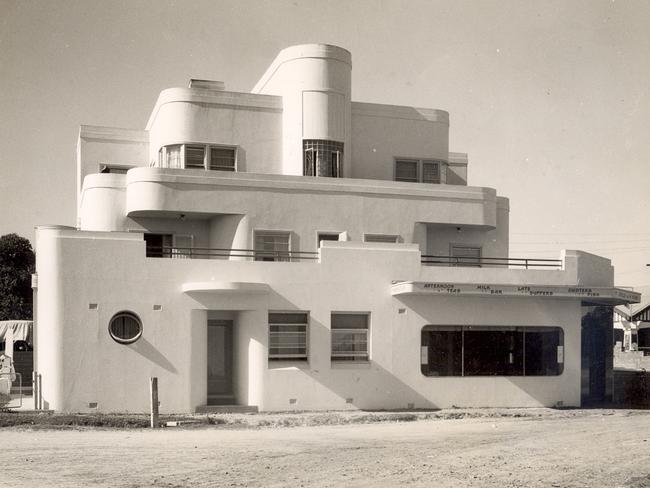
Central Coast
Don't miss out on the headlines from Central Coast. Followed categories will be added to My News.
- Inside Gerry Harvey’s high tech cucumber farm
- New study finds thousands more homes at risk from coastal erosion
- Amazing Underworld mugshots have local link
NOBODY strolling along the picturesque Ettalong beachfront in the late 1930s could have missed it — the gleaming white three-storey mansion facing the ocean.
Next to the old holiday guesthouses that still stood at that time — this was the epitome of architectural style — sleek curved modernist lines reminiscent of the bridge of an oceanliner.
This building on the corner of Beach Street and The Esplanade made a statement. It screamed money and power.
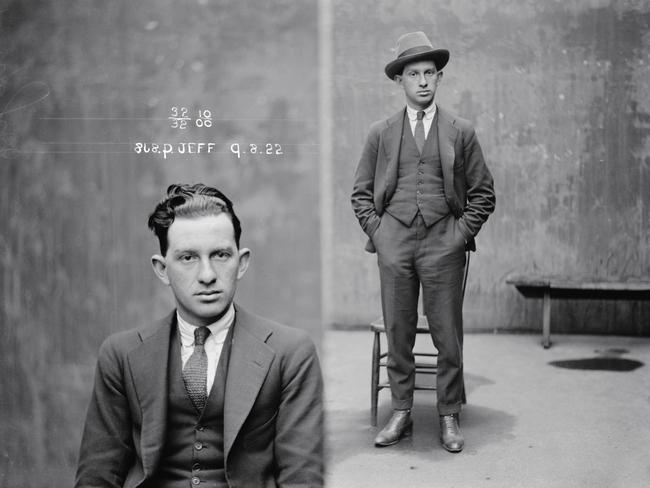
The extraordinary structure was the retirement home of one of Sydney’s most notorious underworld figures of the 1920s and 30s.
Phil ‘The Jew’ Jeffs was a violent career criminal involved in all kids of illegal enterprises — sly grog, theft, prostitution, cocaine and illegal gambling.
He was a hard and violent standover man, well known to police and rightly feared.

Some will know his character from the Channel Nine crime drama Underbelly Razor where his brutal character was played by Felix Williamson.
In his book Crooks Like Us, Peter Doyle describes how Jeffs was heavily involved in the gang wars of the late 1920s — when rival criminal gangs divided behind notorious underworld figures Tilly Devine and Kate Leigh.
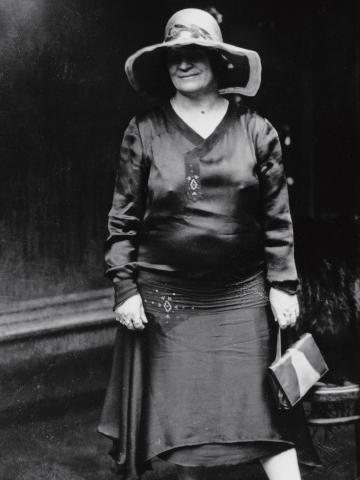
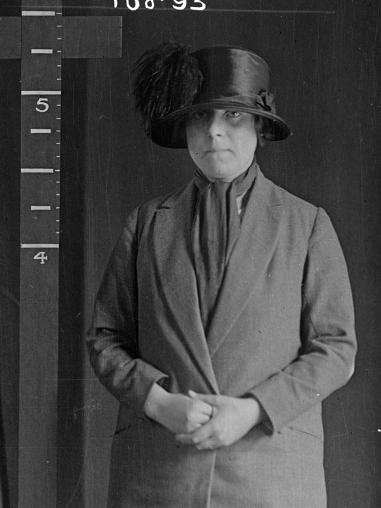
Doyle wrote that Jeff was front and centre at one of the most infamous brawls of the razor gang period — colourfully know as “The Battle of Blood Alley” — in Eaton Avenue at Kings Cross.
Jeffs had been heavily cutting cocaine with boracic acid, while charging customers the full price of the pure drug which infuriated his buyers.
In the resulting public brawl gangsters fought with razors, clubs and boots.
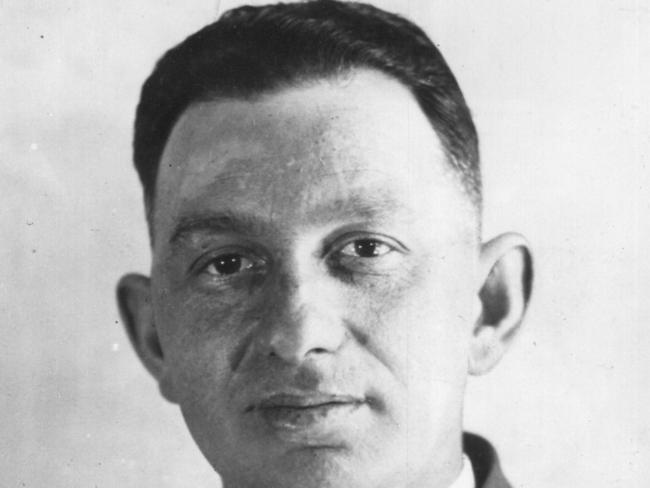
Doyle writes that in the end guns were drawn and Jeffs was shot twice in the chest and wound up in St Vincents Hospital in critical condition. Against the odds he survived, and in true gang land style he never divulged his attacker.
Sydney Living Museums says Jeffs later moved away from his violent activities “by setting up nightclubs that sold sly grog to a better class of customer”.
He reputedly had many influential friends in business, politics and the police force. Jeffs made a lot of money from crime; during the Depression of the 1930s it was common in Sydney for a wealthy person to be described as being ‘as rich as Phil the Jew’.
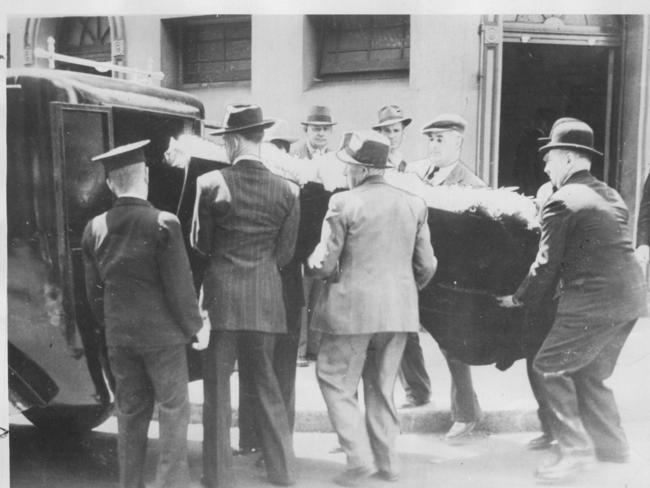
In an excerpt from Alfred McCoy’s book Drug Traffic on the Sydney Crime Museum website McCoy writes that Jeffs began to sell off his night clubs and retired to the Ettalong residence around 1942, with a fortune estimated at £250,000.
Jeffs died in 1945 and is buried under the name Phillip Davis in the Jewish portion of Rookwood cemetery.

The House
Phil Jeffs’ house has long since been demolished — now under the site of the Mantra Hotel complex. Two photographs — one of the exterior and one in the downstairs cafe, were taken by press photographer Sam Hood. They are believed to date from around November 1945, when Phil Jeffs died in St Vincent’s hospital in Sydney.
The building is in the P & O inter-war style inspired by the golden age of the cruise liner. The P & O style emerged from Germany as a version of modernism and is sometimes known as “nautical-deco”.
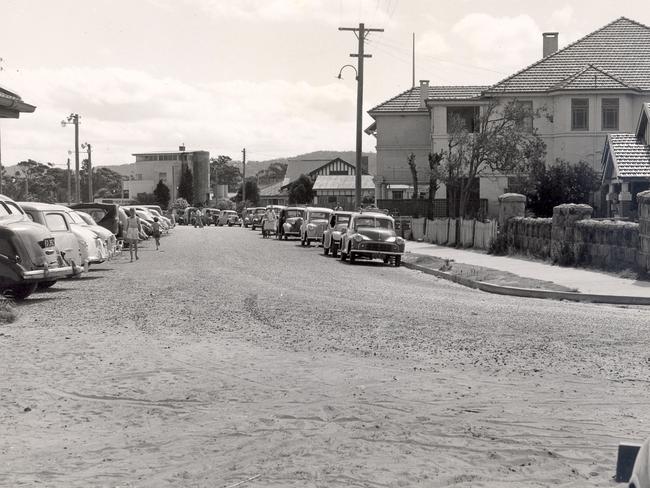
The style is characterised by a streamlined facade of curved walls, glass bricks, flat rooflines and often porthole-shaped, steel-framed windows.
Inside these homes, the streamlined style continued, with simple skirting boards (rather than fancy mouldings) and radiators instead of a fireplace. They were glamorous and exotic for the time and often found close to the ocean or harbour — a silent nod to the ships they were supposed to imitate.

Lost 1930s gems
The Jeffs house at Ettalong was not the only 1930s architectural gem lost to the Central Coast. The fabulous Art Deco Gosford Regal Cinema was also demolished. It stood on the corner of Mann and Donnison Streets where the Commonwealth Bank used to be. The Art Deco/Moderne style building opened in September 1937 with capacity of 617 in the stalls and 365 in the dress circle.
Designed by noted theatre architect of the time Aaron Bolot and decorated by Arnold Zimmerman who also designed Sydney’s State Theatre. It had a grand staircase, curved window frontage, a roof garden with glimpses of Brisbane Water and the surrounding hills. It closed on December 18, 1975. The architectural landmark was demolished to make way for the bank in November 1978.


